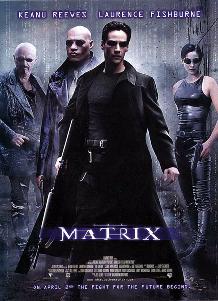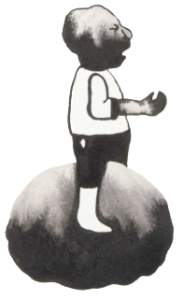 Deze zaak draait om een soort Letse Snowden, die zichzelf heeft vernoemd naar de hoofdpersoon uit the Matrix, ‘Neo’. Neo stuurt journaliste Ilze Nagla, een bekende Letse tv-reporter werkzaam bij de nationale televisie LTV, een e-mail waarin wordt onthuld dat een database van de belastingdienst ernstige veiligheidsgebreken heeft. Het is volgens Neo mogelijk om toegang te krijgen tot vertrouwelijke gegevens zonder de veiligheidsprotocollen te overtreden. Ter illustratie stuurde Neo in zijn mail aan Nagla een overzicht van salarissen van een aantal LTV medewerkers.
Deze zaak draait om een soort Letse Snowden, die zichzelf heeft vernoemd naar de hoofdpersoon uit the Matrix, ‘Neo’. Neo stuurt journaliste Ilze Nagla, een bekende Letse tv-reporter werkzaam bij de nationale televisie LTV, een e-mail waarin wordt onthuld dat een database van de belastingdienst ernstige veiligheidsgebreken heeft. Het is volgens Neo mogelijk om toegang te krijgen tot vertrouwelijke gegevens zonder de veiligheidsprotocollen te overtreden. Ter illustratie stuurde Neo in zijn mail aan Nagla een overzicht van salarissen van een aantal LTV medewerkers.
Daarop informeerde Nagla de belastingdienst. en publiceerde zij over het datalek in haar tv-programma. Een week na die uitzending begon ‘Neo’ op zijn twitter account salarisgegevens te publiceren van bepaalde (publieke) functionarissen.
Nagla werd gehoord door de politie en via de IP-adressen werd ‘Neo’ getraceerd en gearresteerd. Om bewijs te verzamelen in de strafzaak tegen Neo werd vervolgens een huiszoeking uitgevoerd bij Nagla. Daarbij werden harde schijven van de journaliste in beslag genomen. Nagla stapte hierover uiteindelijk naar het Europees Hof voor de Rechten van de Mens, vanwege de inbreuk op het journalistiek brongeheim.
Het EHRM definieert een journalistieke bron als: “any person who provides information to a journalist”. En volgens het EHRM omvat informatie die een bron identificeert: zowel “the factual circumstances of acquiring information from a source by a journalist” als “the unpublished content of the information provided by a source to a journalist”. Daarbij verwijst het EHRM naar Recommendation No. R (2000) 7 on the right of journalists not to disclose their sources of information and its explanatory notes. Het EHRM stelt dan vast dat inderdaad inbreuk is gemaakt op het brongeheim.
De vervolgvraag is dan: is die inbreuk noodzakelijk in de zin van artikel 10 lid 2 EVRM? Het EHRM wijst erop dat eerder (bijvoorbeeld EHRM Roemen en Schmitt) al is vastgesteld dat een doorzoeking met het oog op de identificatie van een journalistieke bron een drastischer maatregel is dan een bevel om de identiteit van een bron te openbaren. Dat geldt zeker in een casus als deze, waarin de search warrent zo vaag was omschreven dat “alle informatie” over de misdaad in beslag mocht worden genomen.
Het Hof stelt journaliste Nagla in het gelijk en concludeert in zijn arrest van 16 juli dat sprake is van een inbreuk op artikel 10 EVRM.
Het brongeheim is geen voorwaardelijk concept, dat afhangt van het handelen van de bron, zo benadrukt het Hof: “The Court emphasises that the right of journalists not to disclose their sources cannot be considered a mere privilege to be granted or taken away depending on the lawfulness or unlawfulness of their sources, but is part and parcel of the right to information, to be treated with the utmost caution …”
De onderzoeksrechter die toestemming gaf voor de huiszoeking en het beslag heeft verder geen of onvoldoende oog gehad voor de te plegen belangenafweging. Het enkele feit dat bewijs in cybercrime zaken de neiging heeft snel te verdwijnen levert op zich onvoldoende reden voor deze vergaande ingreep in artikel 10 EVRM:
“The Court considers that any search involving the seizure of data storage devices such as laptops, external hard drives, memory cards and flash drives belonging to a journalist raises a question of the journalist’s freedom of expression including source protection and that the access to the information contained therein must be protected by sufficient and adequate safeguards against abuse. In the present case, although the investigating judge’s involvement in an immediate post factum review was provided for in the law, the Court finds that the investigating judge failed to establish that the interests of the investigation in securing evidence were sufficient to override the public interest in the protection of the journalist’s freedom of expression, including source protection and protection against the handover of the research material. The scarce reasoning of the President of the court as to the perishable nature of evidence linked to cybercrimes in general, as the Ombudsman rightly concluded, cannot be considered sufficient in the present case, given the investigating authorities’ delay in carrying out the search and the lack of any indication of impending destruction of evidence. Nor was there any suggestion that the applicant was responsible for disseminating personal data or was implicated in the events other than in her capacity as a journalist; she remained “a witness” for the purposes of these criminal proceedings. If the case materials did include any indication in that regard, it was the investigating judge’s responsibility to carry out the necessary assessment of the conflicting interests, which was not done.”

